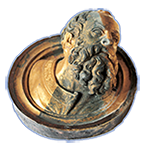Speakers
Description
Ancient and historic wooden artefacts are consolidated by soaking with organic consolidants. Some consolidants, as carbolineum, showed undesired effects and are to be removed. Both, introduction and removal process benefit from a known distribution of the consolidant inside of the object.
X-ray tomography is insufficient for this purpose since both, the wooden matrix and the impregnating chemicals consist of organic substances composed mainly out of carbon and hydrogen. In difference, materials rich in hydrogen are rather effective in absorbing neutrons. This makes neutron radiological technologies predestine for studying the distribution of applied organic substances in wooden objects.
To demonstrate both, the purpose of the interrogation with neutrons and the range of objects that could be investigated, four different examples of objects are presented here: 1) small wooden pieces of ship wrecks (< 2 cm thickness) interrogated with cold neutrons (0.5 meV at the ANTARES facility of the FRM II in Garching) to demonstrate the potential and the limitation of using low energy neutrons, 2) pieces of charred wood to study the impregnation with a consolidant (fission neutrons 1.8 MeV at the NECTAR facility of the FRM II), 3) a wooden statue soaked with carbolineum (same facility) and 4) a smaller wooden figure of a scull heavily soaked with carbolineum which was too tight for the fission neutrons with accelerator neutrons (broad range about 5.5 MeV at the PTB in Braunschweig).

